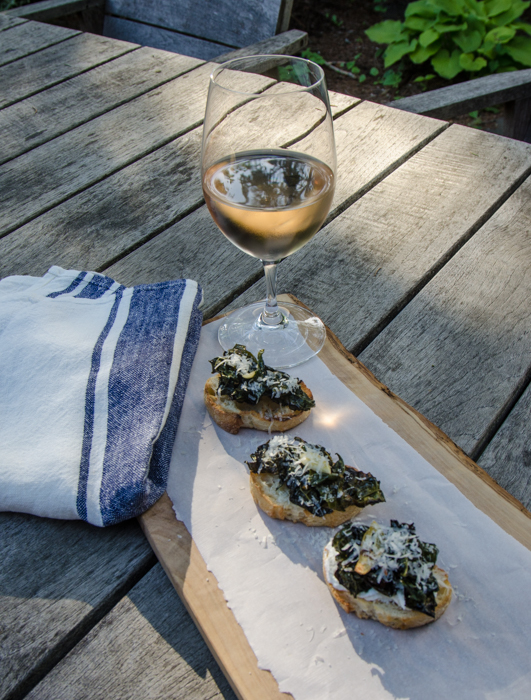
I recently held a cooking class on the cuisine of Tuscany at Port Plums in Newburyport, introducing some of the wonderful dishes we enjoy on our private Tuscany tours. We started with a couple of types of bruschetta. Pronounced BRU-sketta (note the “ch” is pronounced as “k” in Italian), the name comes from the Roman verb bruscare, meaning ‘to roast over coals’. This is an ancient dish, dating back to the Etruscan age. Then, this referred to a simple dish of grilled bread – best day old, a bit stale – either grilled or baked in an oven, rubbed with garlic and drizzled with olive oil. You’ll also see this called fettunta, which translates as “oiled slice”.
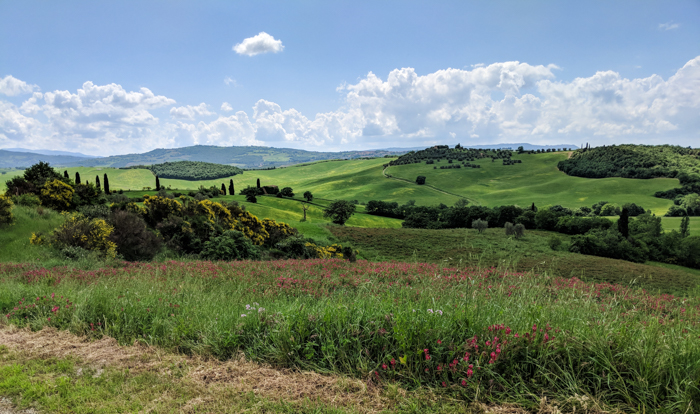
In Tuscany, renowned for its olive oil, the olive farmers believe that the oil used for this should be very young and recently pressed and that bruschetta or fettunta is best accompanied by a glass of wine. As an old Italian proverb goes, “Day-old bread, month-old oil, and year-old wine”.
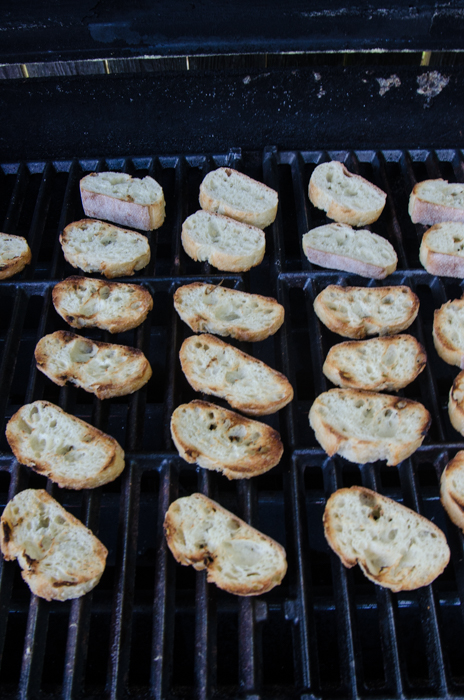
Today, the term bruschetta refers to an antipasti that consists of this basic grilled bread served with just about any topping you can imagine. All over Italy you will see an enormous variety of options – with meats like prosciutto crudo, chicken livers, fresh sausage or lard; versions served with zucchini, eggplant, mushrooms, bell peppers and many different kids of cheeses. In Tuscan favorites include bruschetta al pomodoro, topped with tomatoes, basil, and more olive oil, bruschetta with chicken livers, and this one – bruschetta with cavolo nero, “black kale”.
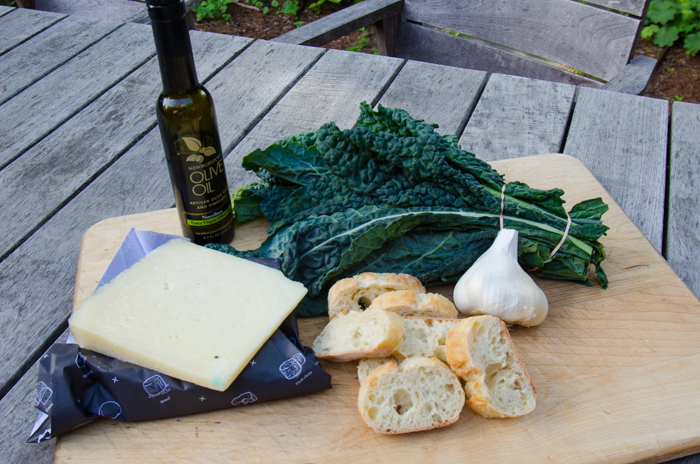
Lacinato kale, called cavolo nero (“black kale”) is a variety of kale with a long tradition in Tuscan cuisine. It is also known as Tuscan kale or Tuscan cabbage, and is one of the traditional ingredients of the Tuscan soup ribollita.
The history behind these bread-based dishes in Tuscan cuisine – bruschetta, ribollita, panzanella, pappa al pomodoro – dates back to the 12th century, when the rulers of Pisa were at odds with the rulers of Florence and cut off their supply lines from the coast. This made salt prohibitively expensive. The Florentines, unwilling to cave to the pressure, simply began making their bread without it. Hence, Pana Toscano was born – Tuscan bread, made without salt. So the cuisine of Tuscany is filled with inventive ways of making this fairly tasteless bread delicious.
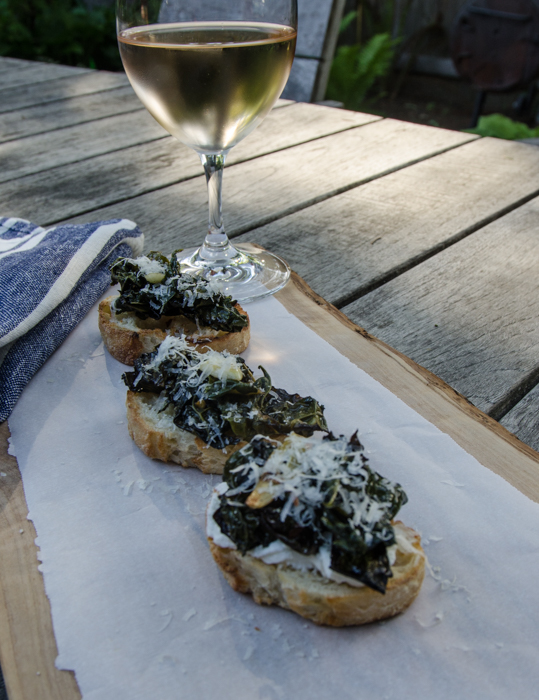
Bruschetta al Cavolo Nero (Tuscan Kale)
1 bunch Tuscan kale, rinsed
Extra-virgin olive oil
Kosher salt
Big pinch hot red pepper flakes
2 garlic cloves, sliced
2 cloves garlic, whole
1 lemon
Cut off and discard the center stem of the kale. Slice the leaves into 1/2-inch pieces.
Set a large Dutch oven or similar pot over medium heat. When it’s hot, add 3 tablespoons olive oil to coat the bottom of the pot. When the oil shimmers, add the kale. Season with salt and red pepper flakes. You might need to mound the kale to make it fit, or wait for some of it to cook down before you add the rest. Cover the pan and cook, stirring occasionally, until the kale is tender, about 15 minutes.
Remove the lid and increase the heat to high. Move the kale to the outer edges of the pan. Add a tablespoon of olive oi into the center, then add the garlic into the oil and let it sizzle gently for about 2 seconds, until it starts to release an aroma. Before the garlic begins to brown, stir to combine it with the kale. Taste and adjust the salt and red pepper flakes as needed. Remove from heat and squeeze the juice of half a lemon over the kale.
Stir, taste, and add more lemon juice if needed. Remove from heat. Let sit at room temperature while you toast the bread.
Toast the bread in a 350° oven directly on the rack until golden brown, about 5 minutes. Or grill. You want nicely browned grill lines, but still a softer interior.
Remove from oven, and rub each slice all over with a garlic clove. Brush each slice with olive oil. Place the bread slices on a serving plate, top the bread with the kale, and drizzle with extra-virgin olive oil right before serving.
Variation: Top bread first with ricotta cheese, seasoned with salt and pepper, then top with kale.
